[FIX] Windows Update – KB5000802 Blue Screen of Death (BSOD)
Microsoft has a known and long history of releasing buggy updates. The same is the case with the KB5000802 update and a bug in the update is causing the BSOD (blue screen of death) issue.
The issue arises (after applying the KB5000802 update) when a user tries to print a document but faces a BSOD with the following type of message:
APC_INDEX_MISMATCH for win32kfull.sys
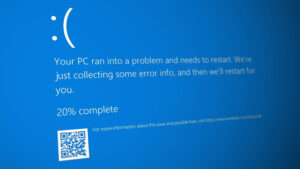
The BSOD problem is not limited to a particular manufacturer of printers, even some users reported that the BSOD occurred even while using a soft printer (like Microsoft Print to PDF).
Solution 1: Install the Out-of-Band Update
Microsoft continuously received complaints of the BSOD caused by the KB5000802 update. So, the Redmond giant released the out-of-band update. In this case, installing Microsoft’s hotfix may solve the problem. The said update is said to be having failed when applied through the Windows Update channel in the Settings.
- Launch a web browser and steer to the Windows Update Catalogue website.
- Now, in the search box, search for the update as per your OS version as described below:
Windows 10/Server Version 20H2, search for KB5001567 Windows 10/Server Version 2004, search for KB5001567 Windows 10/Server Version 1909, search for KB5001566 Windows 10/Server Version 1809, search for KB5001568 Windows 10 Version 1803, search for KB5001565
- For example, if you are using Windows 10 version 20H2, search for KB5001567 and then download the mentioned update.
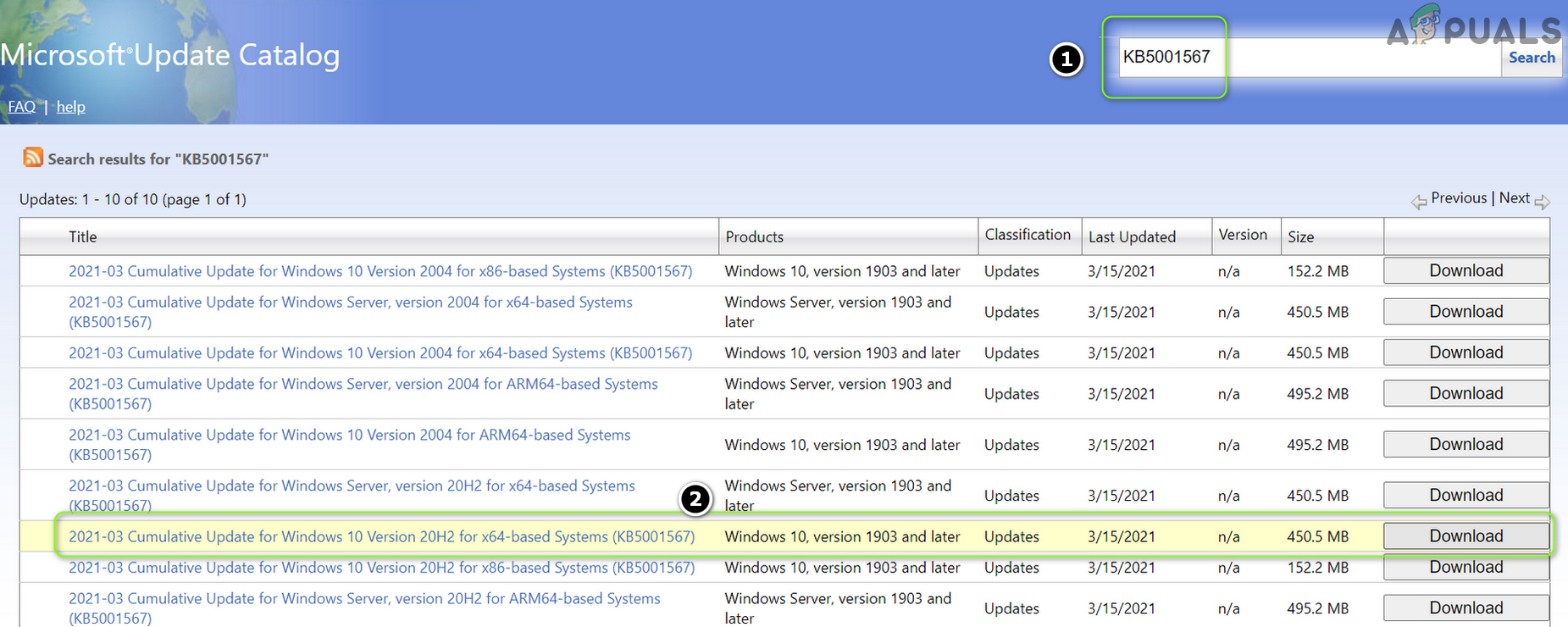
Search and Download the KB5001567 Update from the Update Catalog Website - Then, launch the downloaded update as an administrator and follow the prompts to complete the process.
- Now reboot your PC and check if the BSOD issue is resolved.
Solution 2: Reinstall the Printer Driver and Configure the Printer Port
The BSOD issue may arise if the printer driver of your system is corrupt or incompatible with the KB5000802 update. In this case, reinstalling the printer driver may solve the problem.
- Firstly, disconnect your PC from the printer (if attached directly) and then download the latest driver for your printer from the OEM website.
- Then right-click on the Start menu (or Windows) button and in the Quick Access menu, select Device Manager.
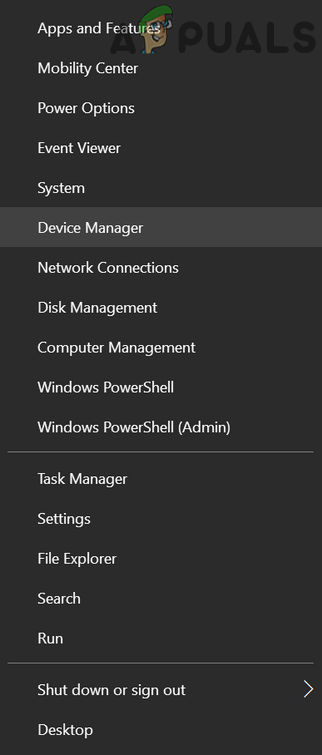
Open Device Manager of Your System - Now expand the Printers option and right-click on your printer.
- Then choose Uninstall Device and in the resulting window, checkmark the option of Delete the Driver Software of This Device.
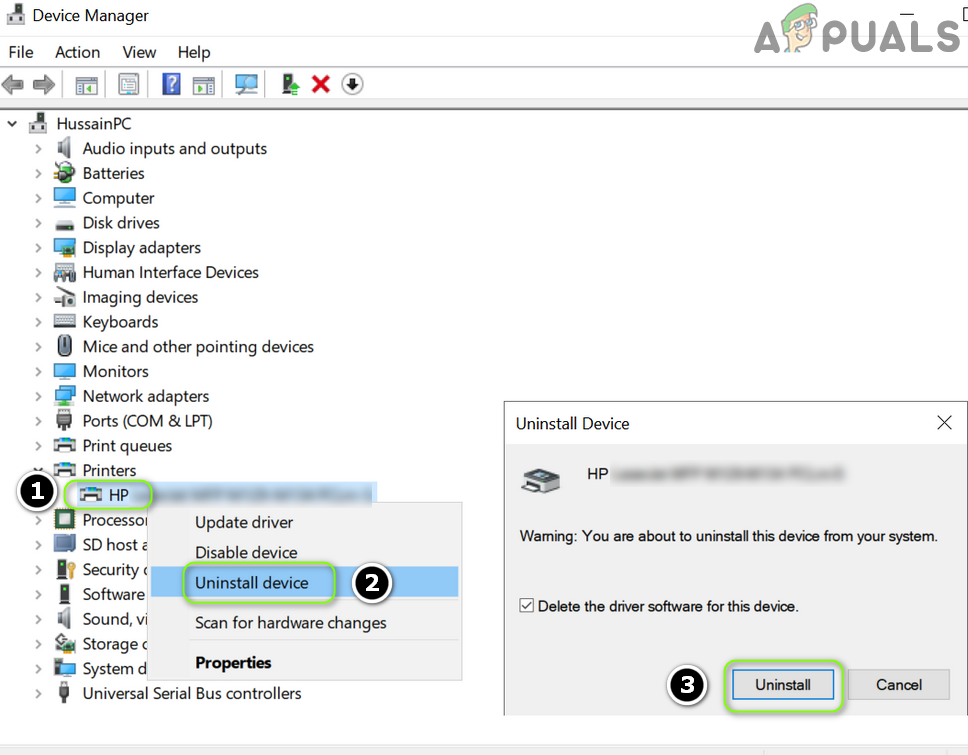
Uninstall the Printer from the Device Manager and Delete its Driver - Now click on the Uninstall button and let the printer uninstallation complete.
- Then reboot your PC (if your printer came with a printer software, remove that as well in the Apps & Features Settings) and reinstall the printer driver to check if printing is causing the BSOD issue.
- If the issue persists, then uninstall the printer driver, reboot your system and install a PCL 6 driver of your printer (certain features of your printer might not work with a PCL6 driver) to check if the BSOD issue is resolved.
If the issue persists, then most probably the printer port in the Windows Settings is not properly configured and properly configuring it may solve the problem.
- Press the Windows key and in the search box, type: Print Management. Then open Print Management.
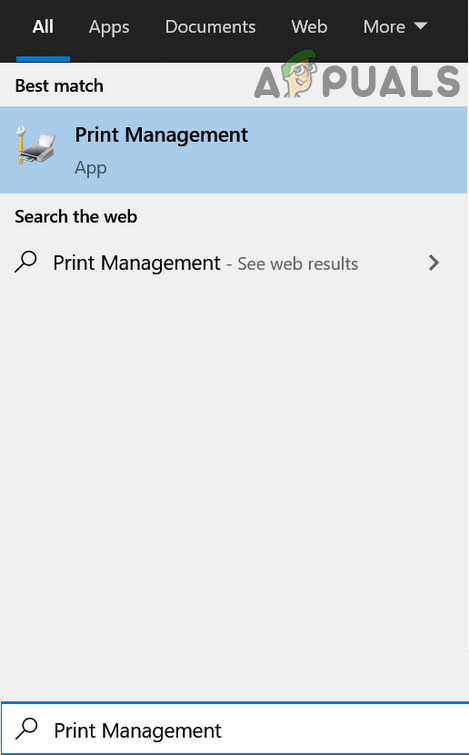
Open Print Management - Now, in the left pane, expand Print Servers and select your system.
- Then spread the option of Printers and in the right pane, double-click on the problematic printer.
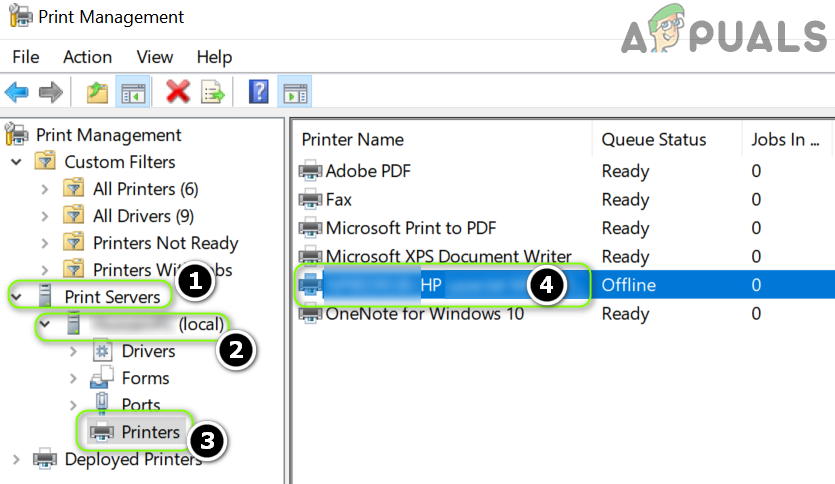
Open Your Printer in the Print Management Console - Now, steer to the Ports tab and check if the printer port is properly configured (you may visit the OEM website to find out the proper port configuration of your printer). For example, if you are using a network printer and its port changed to IPP (Internet Printing Protocol, the Windows default port for the Internet), then changing it to TCP/IP may solve the problem.
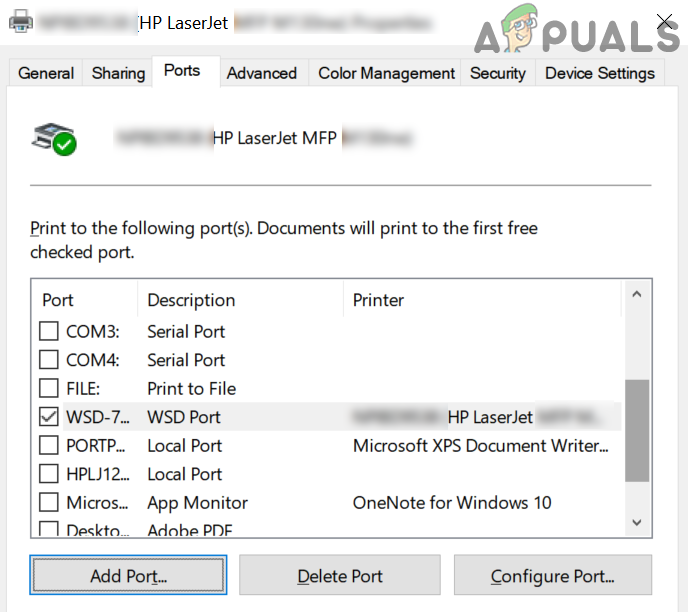
Select the Proper Port of Your Printer - If the port is misconfigured, then add/change the port as per the documentation/manual of the OEM and then check if the BSOD issue while printing is resolved.
If the Print Management option is not available at step 1, then you may add it in Settings >Apps >Optional Features >Add a Feature > search and add Print Management Console.
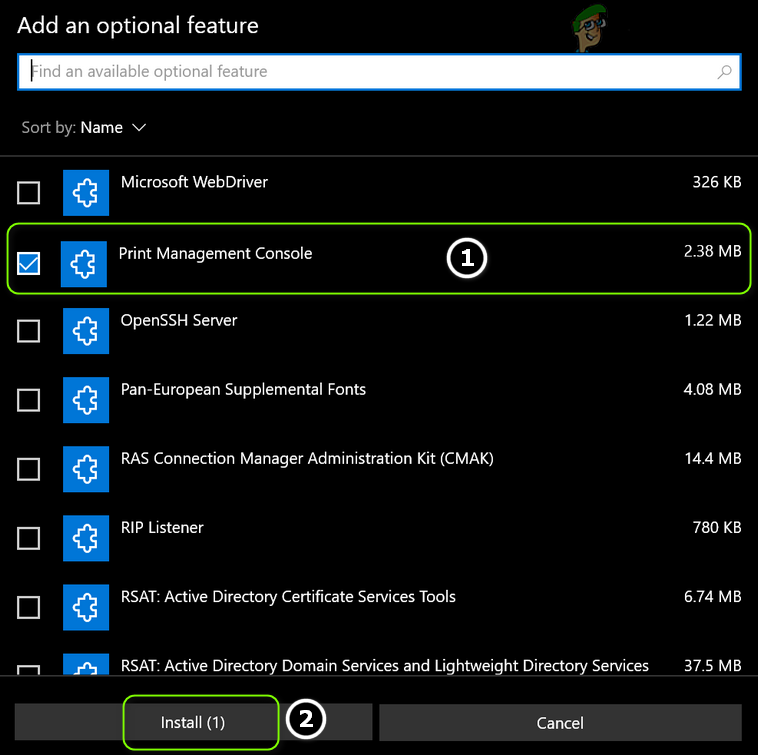
Solution 3: Uninstall the KB5000802 Update
The issue is reported to be caused by a bug in the KB5000802 update and none of the above-mentioned solutions did the trick for you, then there is no choice left but to remove the buggy KB5000802 update. .
- Press the Windows key and open Settings.
- Now select Update & Security and in the right pane, open View Update History.
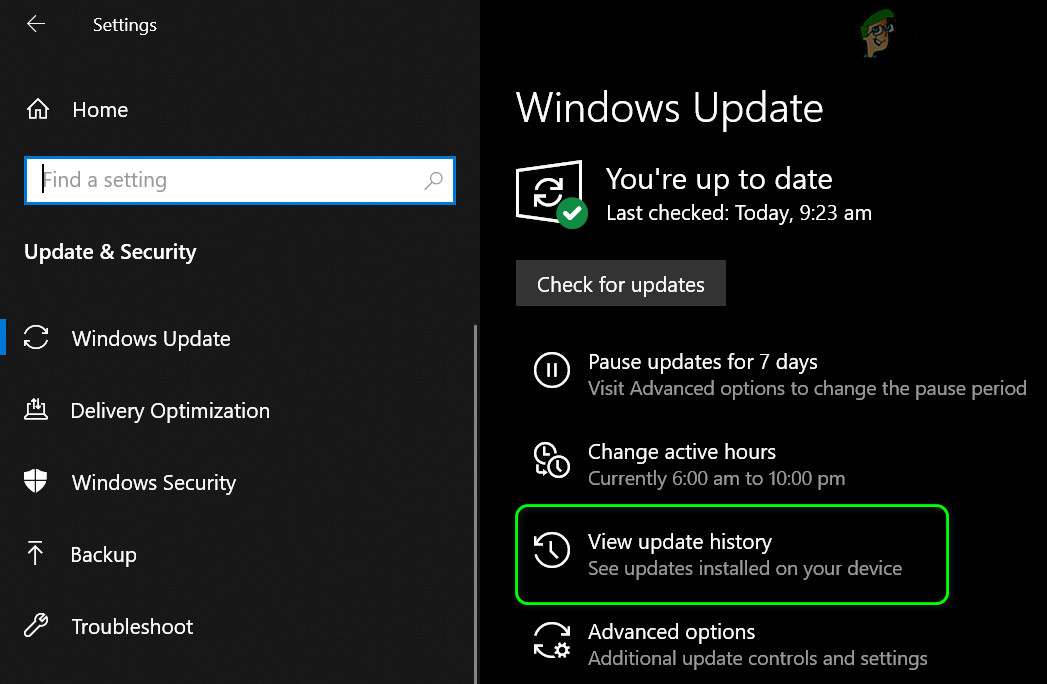
View Update History of Your System - Then click on the Uninstall Updates and select the KB5000802 update.
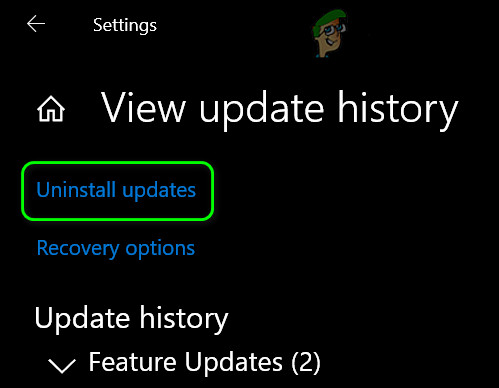
Open Uninstall Updates - Now click on Uninstall and then let the update uninstallation complete.
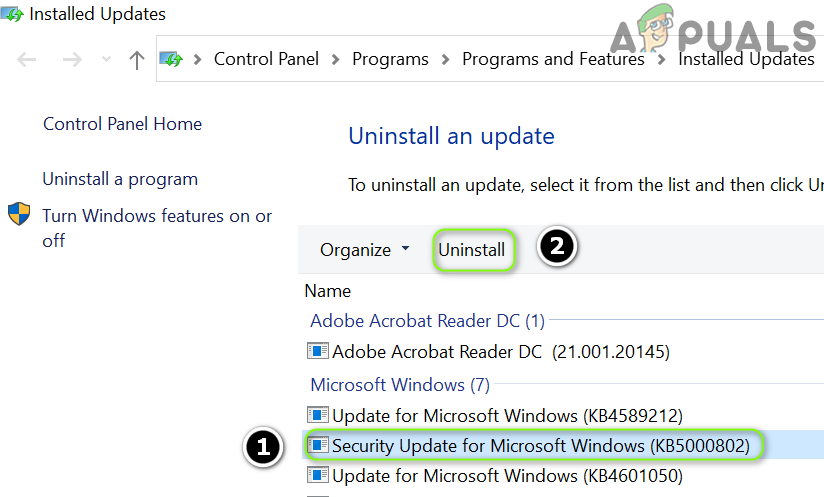
Uninstall the KB5000802 Update - Then reboot your PC and check if the system is clear of the BSOD error.
If the Update is shown in the Quality Updates but cannot be uninstalled through the above-method.
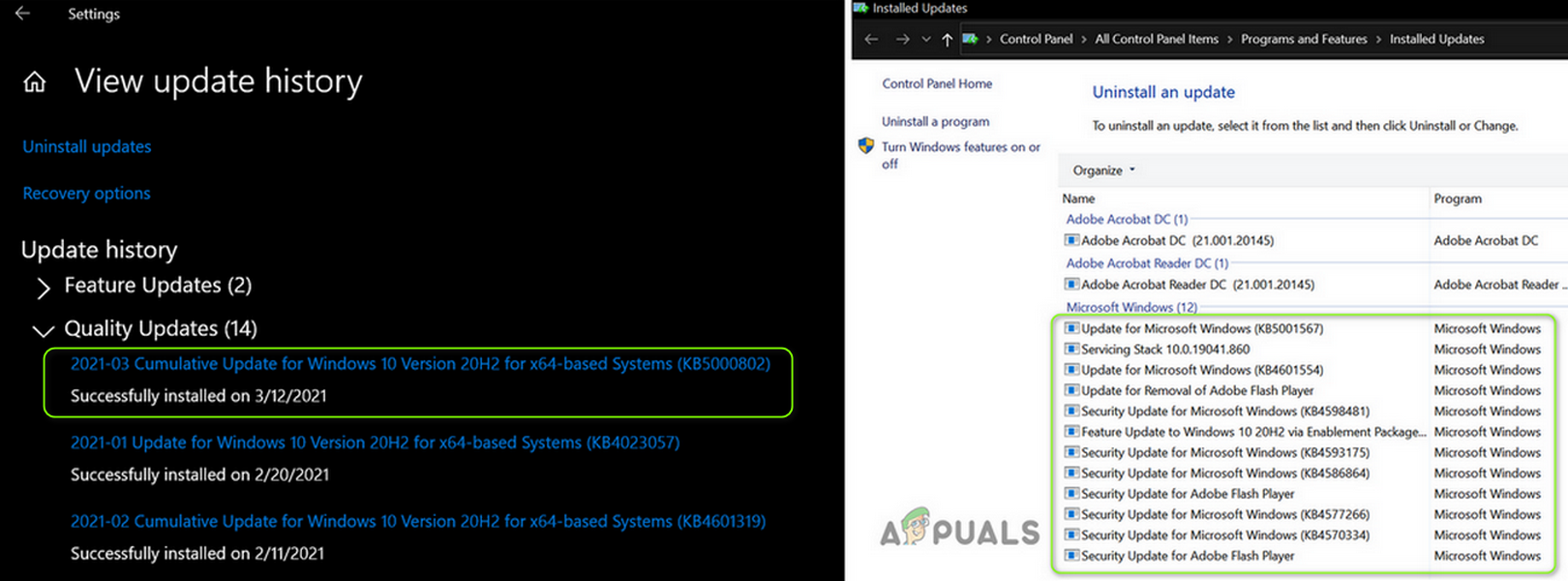
Then, you may use the Command Prompt to uninstall the update:
- Press the Windows key and in the search bar, type: Command Prompt. Now, in the results list, right-click on the result of the Command Prompt and choose Run as Administrator. You can try the same in the PowerShell (Admin).
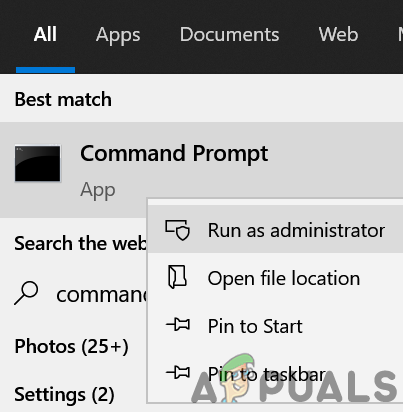
Open Command Prompt as Administrator - Now, execute the following:
wusa /uninstall /kb:5000802
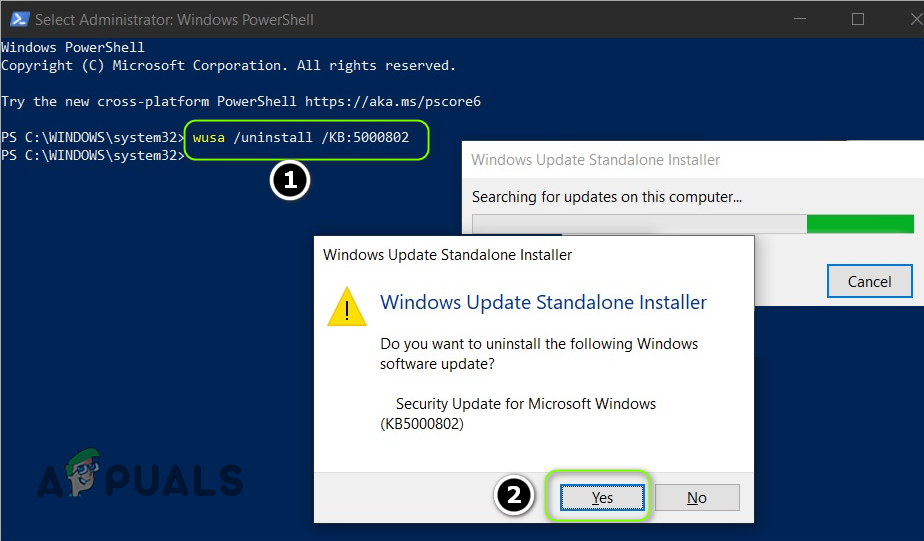
Uninstall the KB5000802 Update Through the Command Prompt - Now, allow the uninstallation of the update and then reboot your PC.
- Upon reboot, check if the BSOD issue is resolved.
Once the update is removed, you may defer the KB8000502 update. Also, make sure the Delivery Optimization in the Update & Security settings is disabled, so, that the update could not be fetched from the other PCs.
If the issue persists, you may try to restore your system to a previous date (before the update hit your system) and then block the particular update.





